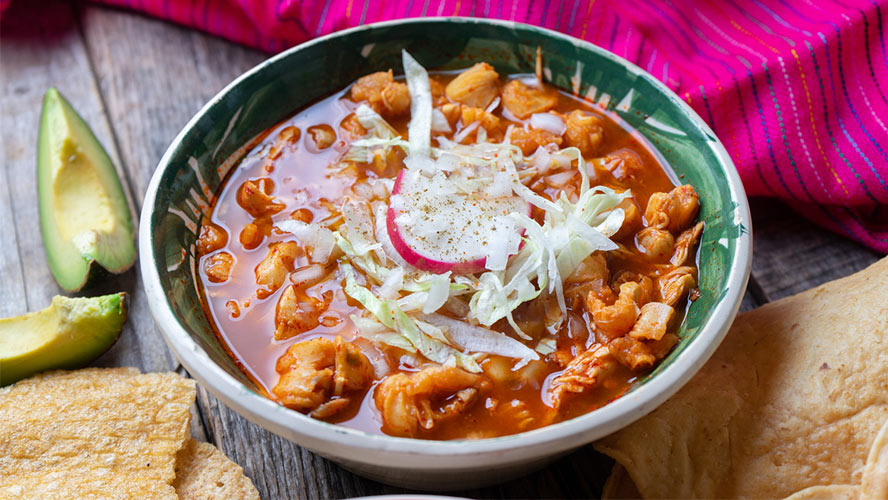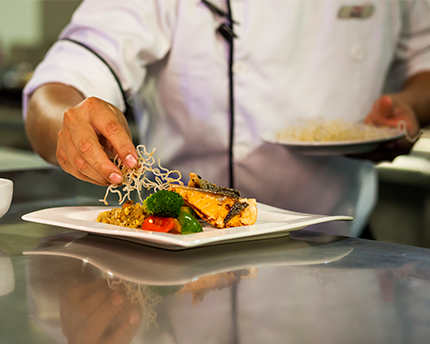Cancun and Riviera Maya represent an enormous jigsaw puzzle made up of pieces of all sizes and colors, and food is a clear example of this diversity. From the ancestral flavors of the Mayan World to the ingredients that have come to the area from all over Mexico, the traditional dishes of this corner of the Caribbean offer you an always delicious surprise.
In this sense, traditional Mexican gastronomy is recognized as UNESCO’s Intangible Heritage of Humanity, an acknowledgment that confirms what we all know: eating in Mexico is a true wonder, and, of course, way more than tacos! Obviously, Riviera Maya is also part of this delicious gastronomic scene. And if the recipes and ingredients are rich and varied, the places where you can enjoy good Mexican food are even more so. Try some cochinita pibil tacos at a street stall or enjoy a superb meal at a luxury restaurant. And everything in between!
- La conchita pibil
- Los panuchos
- El pescado Tikin-xic
- El Poc Chuc
- El Ceviche
- Los chilaquiles
- El pozole
It doesn’t matter if you are in Cancun, in Playa del Carmen, in Cozumel, or anywhere else in the Mexican Caribbean, enjoying a good meal is one of the things that will make your vacation a truly unforgettable experience. And to make things a little easier here is a small list of suggestions with some of the most traditional Mexican recipes. Flavors and scents that you just can’t miss!
1. La cochinita pibil: The Yucatecan jewel
A little spicy, with an acid touch, an indescribable aroma, and a sweet note, cochinita pibil is the most iconic dish of the traditional Yucatan-style cuisine. Cooking it well is quite something: the key is in the marinade or recado –made with achiote paste, spices, sour orange, butter, salt…– and in the long cooking time needed for it to achieve its super tender texture. And if it’s wrapped in banana leaves and cooked in a traditional pib (a Maya-style oven made by digging a hole in the ground), then this dish is just out of this world. In tacos, sopes, sandwiches, panuchos… and always accompanied by habanero chili and pickled onion, cochinita pibil is a real delicacy.
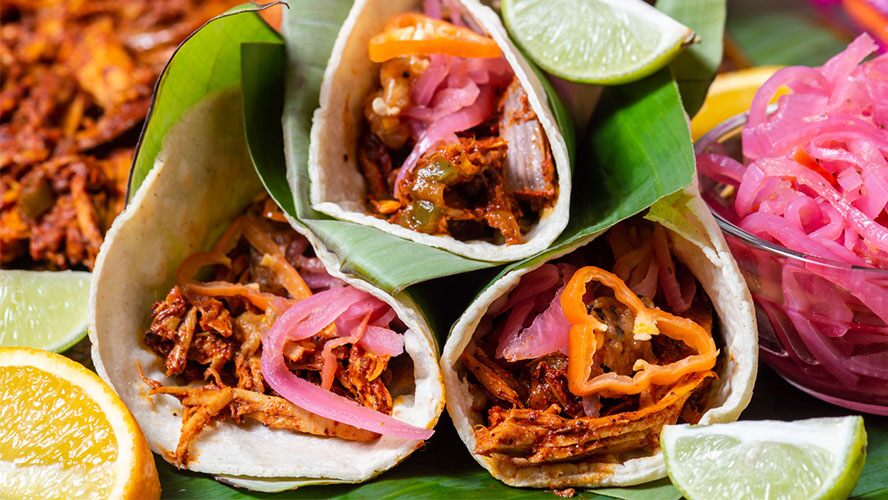
2. Panuchos: a perfect snack
Back to the traditional Yucatan cookbook, panuchos are one of the tastiest snacks in the entire Peninsula. It’s a corn tortilla stuffed with strained Yucatan-style black beans and traditionally fried in lard. Originally, it also had a slice of hard-boiled egg inside, but today that’s no longer common. Of course, it’s topped with sliced lettuce, tomatoes, avocado, shredded chicken, pickled red onion, and habanero pepper. In addition to chicken, you can also find panuchos stuffed with cochinita pibil, stewed or pickled turkey, and much more… Perfect for snacking!
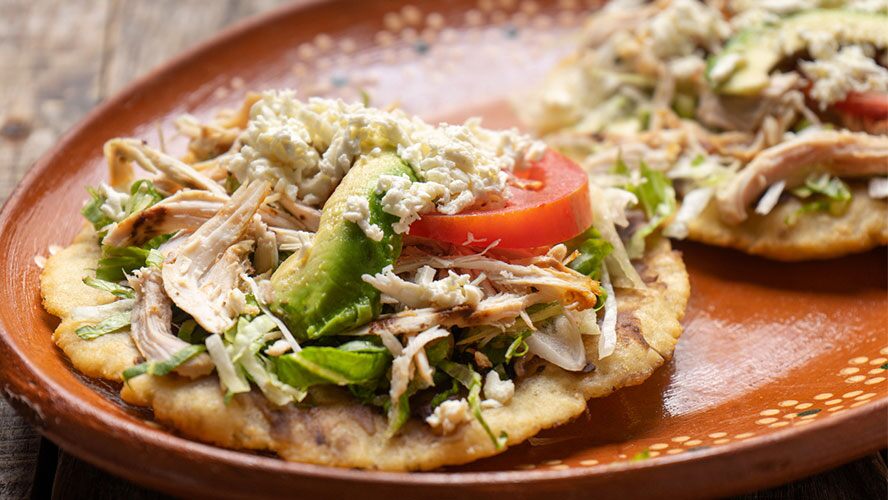
3. Tikin-xic fish: marine seasoning
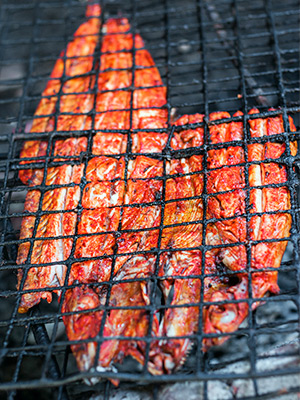
This is one of the most typical dishes in a good part of the coast of the Yucatan Peninsula. It is prepared by marinating the fish –it can be grouper, red snapper…, open by the middle and without the spine – with achiote, sour orange, and spices. After resting for about three hours, it is covered with strips of xcatic chilis, red onion, tomato slices, oregano, salt, and pepper, and then bathed with beer. Finally, it’s cooked on the grill, wrapped in banana leaf and coconut shell. Within the entire region, Isla Mujeres is a classic place to eat Tikin-xic fish. It is even said that it was there that this unique dish was cooked for the first time.
4. The Poc Chuc: for carnivores with a twist
In Yucatec Maya, poc means “toast” and chuc, “coal.” And that is, basically, poc chuc: grilled pork (usually loin). An ideal dish for true carnivores. But, beware, there’s a secret! The key to this delicacy is that the meat must first be marinated in sour orange juice (some also use oregano, thyme, and pepper). After being immersed in this preparation for a long time (the more the better), the meat acquires an incomparable texture and flavor. Usually, this typical dish is served with rice, strained beans, avocado, radish slices, roasted onion pieces mixed with sour orange juice and coriander, and a sauce made with grilled tomatoes and habanero peppers.
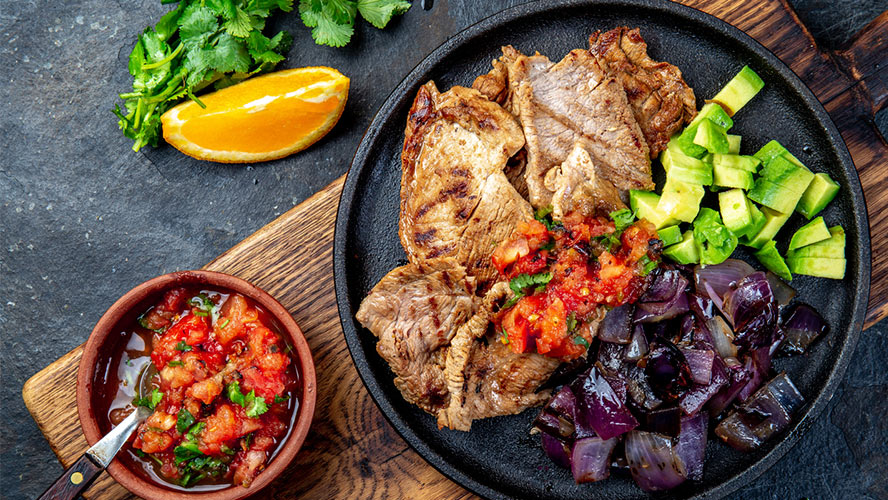
5. El Ceviche: the taste of the sea
When in Mexico, if you’re by the sea you’ll find ceviche. And, of course, the Riviera Maya is no exception. Shrimp, fish, octopus, sea snail… fresh products cooked in lime juice (and sometimes boiled), topped with chopped onion and tomato, cilantro (coriander), avocado, habanero chili… And all the variants you can imagine! Perhaps the most classic in the area is the Chetumal-style ceviche, which is made of sea snail. To prepare it, you must first hit the snail meat with a hammer or a stone to soften it, then cut it into small pieces and cover it with boiling water. Once cold, drain and mix with lemon juice, chopped onion, salt, and pepper, and let it rest (at least a couple of hours). Finally, chopped tomato and deveined habanero are added, and it can be served over corn tostadas and avocado.
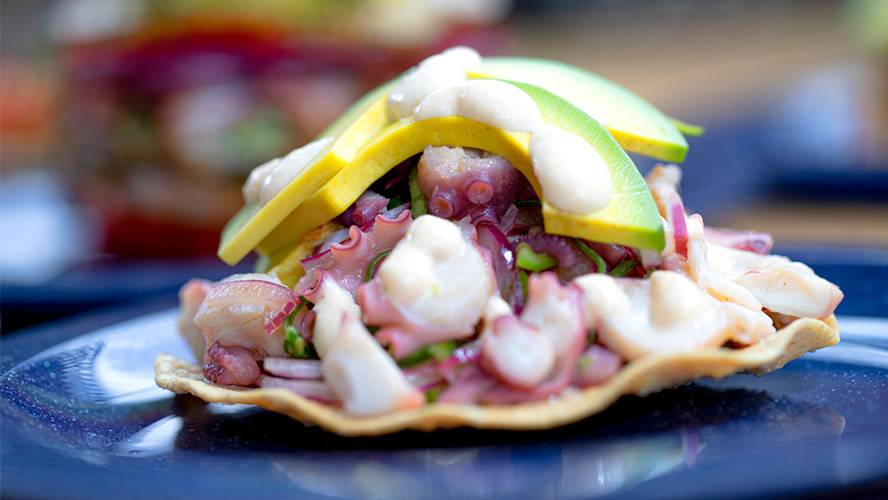
6. The chilaquiles: an indisputable classic
Corn is the base of traditional Mexican food, and tortillas are the most common way of eating this ancient cereal. You can make everything with them: tacos, tostadas, quesadillas… and, of course, the classic tortilla chips, those crunchy pieces of fried tortilla that can be served with almost anything. (No, they are not nachos, they are tortilla chips… or totopos, if you really want to sound local). And chilaquiles are none other than tortilla chips bathed in green or red sauce… Well, yes, accompanied with any number of things, from cream, onion, coriander, and cheese to beans, avocado, fried eggs, chicken, jerky, chorizo… Whatever you like! A simple but really delicious dish and one of the most typical breakfasts served in all of Mexico.
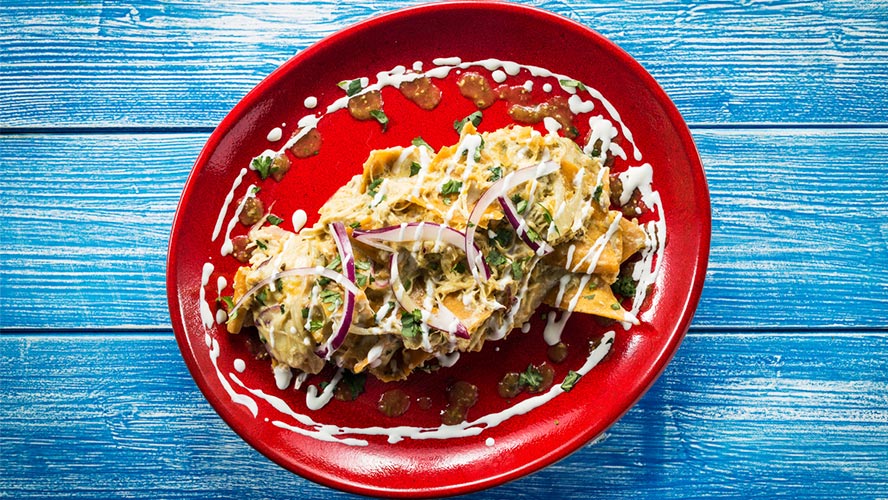
7. The pozole: a unique broth
Once again, corn shows up, but now in whole grain and cooked in a rich broth of pork or chicken. Pozole is a stew of pre-Columbian origin that has different variants throughout the country: there is white, green, and red, depending on the ingredients that are added to the broth, but always with grains of a specific type of corn commonly known as cacahuazintle (larger and whiter than other varieties). Like so many other typical dishes, pozole is also topped with all kinds of garnishes and condiments: sliced lettuce, finely chopped onion, cream, oregano, lime juice, radish, avocado, fresh cheese, chili powder… An explosion of flavor in each mouthful!
